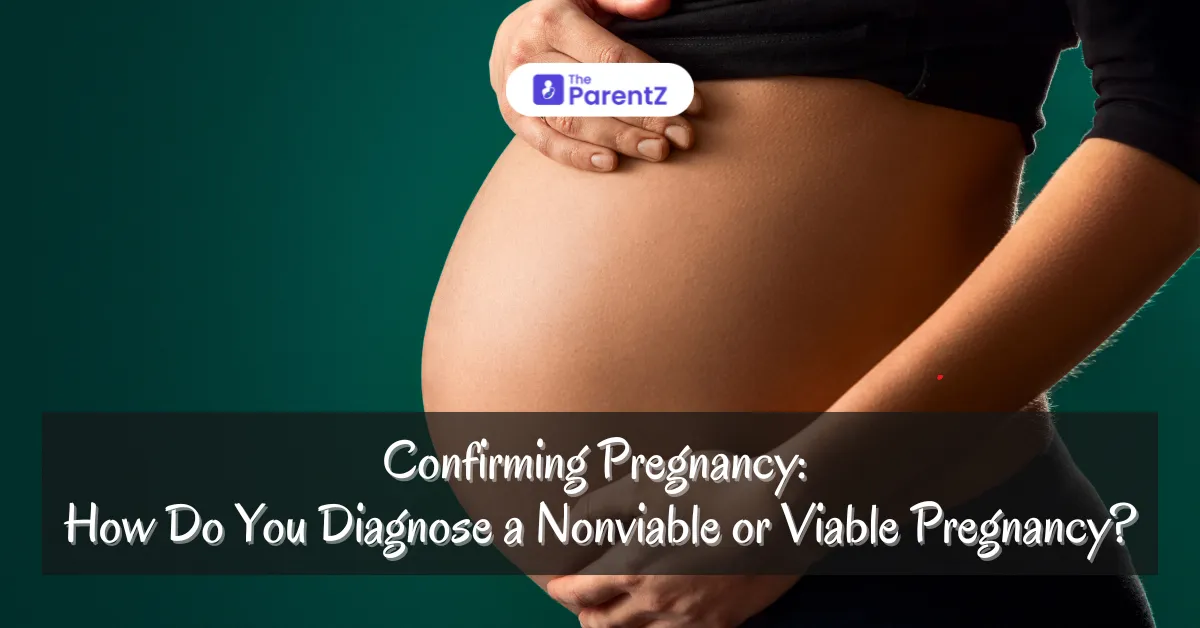Confirming Pregnancy: Diagnostic Measures for Viable and Non-Viable Pregnancies
Confirming pregnancy is a critical step in prenatal care, involving clinical evaluation and laboratory investigations. Diagnosing a viable pregnancy requires identifying normal embryonic or fetal development, whereas non-viable pregnancies involve failed implantation or early embryonic demise. Accurate and timely diagnosis ensures appropriate clinical management.
Pregnancy confirmation is a fundamental aspect of gynecological and obstetric care. Early diagnosis is essential for guiding clinical management and determining pregnancy outcomes. While most pregnancies progress without complications, up to 15% end in early pregnancy loss (1).
Diagnostic Methods for Confirming Pregnancy
1. Clinical Evaluation
Early pregnancy symptoms such as amenorrhea, nausea, and breast tenderness often lead individuals to seek medical confirmation. Physical examination may reveal:
• Softening and enlargement of the uterus (Hegar’s sign).
• Bluish discoloration of the cervix and vagina (Chadwick’s sign).
However, these signs are nonspecific and must be confirmed through laboratory and imaging techniques.
2. Biochemical Testing
Biochemical markers play a pivotal role in diagnosing and monitoring early pregnancy.
• Human Chorionic Gonadotropin (hCG)
• Principle: The presence of hCG in blood or urine confirms pregnancy. Produced by the trophoblast, hCG is detectable as early as 8–10 days after ovulation.
• Serum hCG Levels: Quantitative measurements are crucial for assessing pregnancy viability. In normal pregnancies, serum hCG levels double approximately every 48–72 hours during early gestation (2).
• Abnormal Patterns:
• Slow hCG rise or plateau: May indicate ectopic or non-viable pregnancy.
• Declining hCG: Suggests early pregnancy loss.
3. Ultrasound Imaging
Transvaginal ultrasound (TVUS) is the gold standard for diagnosing pregnancy and determining viability.
• Gestational Sac: The first sonographic evidence of pregnancy, visible at 4–5 weeks of gestation.
• Yolk Sac: A positive indicator of viability, appearing by 5.5 weeks.
• Fetal Pole with Cardiac Activity: Cardiac activity should be evident by 6 weeks gestation.
• Normal fetal heart rate: 110–160 bpm.
Ultrasound Parameters for Non-Viable Pregnancy:
• Gestational sac >25 mm without a yolk sac or fetal pole.
• Crown-rump length (CRL) ≥7 mm without cardiac activity.
(3)
4. Physical Examination and Adjuncts
When biochemical or sonographic findings are inconclusive, serial examinations help confirm the trajectory of pregnancy.
Differentiating Viable from Non-Viable Pregnancy
Viable Pregnancy
• Definition: A pregnancy with evidence of normal embryonic or fetal growth and development.
Key Findings:
• Serum hCG levels rise appropriately.
• Ultrasound demonstrates gestational sac, yolk sac, and fetal cardiac activity.
Non-Viable Pregnancy
• Definition: A pregnancy that is unable to progress due to early embryonic or fetal demise or other complications.
Types of Non-Viable Pregnancies:
• Chemical Pregnancy: Early pregnancy loss before ultrasound confirmation.
• Missed Miscarriage: Embryonic demise without symptoms of miscarriage.
• Blighted Ovum (Anembryonic Pregnancy): A gestational sac without an embryo.
Diagnostic Criteria:
• Serum hCG levels plateau or decline.
• Absence of fetal cardiac activity on ultrasound.
• Abnormal sac size without corresponding development.
Measures for Diagnostic Accuracy
• Serial hCG Monitoring: Essential in ambiguous cases or suspected ectopic pregnancy. A failure to double within 48–72 hours warrants further investigation.
• Repeat Ultrasound: Performed 7–14 days after an inconclusive scan to confirm findings.
• Progesterone Levels: Low levels (<5 ng/mL) indicate a non-viable pregnancy but are not definitive.
Clinical Implications of Non-Viable Pregnancy
The diagnosis of a non-viable pregnancy has profound emotional and medical implications. Early identification allows clinicians to:
• Prevent complications such as infection or hemorrhage.
• Offer counseling and emotional support.
• Provide appropriate medical or surgical management options.
Managing Viable Pregnancies
• Prenatal Care: Early initiation of prenatal vitamins (folic acid), regular monitoring, and lifestyle counseling.
• Addressing Risk Factors: Management of obesity, diabetes, or other comorbidities improves pregnancy outcomes.
Sources of Error and Challenges
• False Positives: Elevated hCG levels due to molar pregnancies or tumors.
• False Negatives: Delayed ovulation or testing too early in gestation.
Improved diagnostic protocols and clinician training minimize these errors.
Conclusion
Confirming pregnancy and determining viability are essential components of early prenatal care. Combining clinical evaluation, laboratory testing, and imaging allows for accurate diagnosis and appropriate management. Timely intervention in cases of non-viable pregnancies reduces complications and supports emotional well-being, while early recognition of viable pregnancies optimizes outcomes. Future advancements in diagnostics may further improve the precision and speed of pregnancy confirmation.
References
1. American College of Obstetricians and Gynecologists. Early Pregnancy Loss. 2018.
2. Goldstein SR. Embryonic cardiac activity: A sign of early pregnancy. Am J Obstet Gynecol. 2021.
3. Royal College of Obstetricians and Gynaecologists. Early Pregnancy Assessment. 2020.








Be the first one to comment on this story.